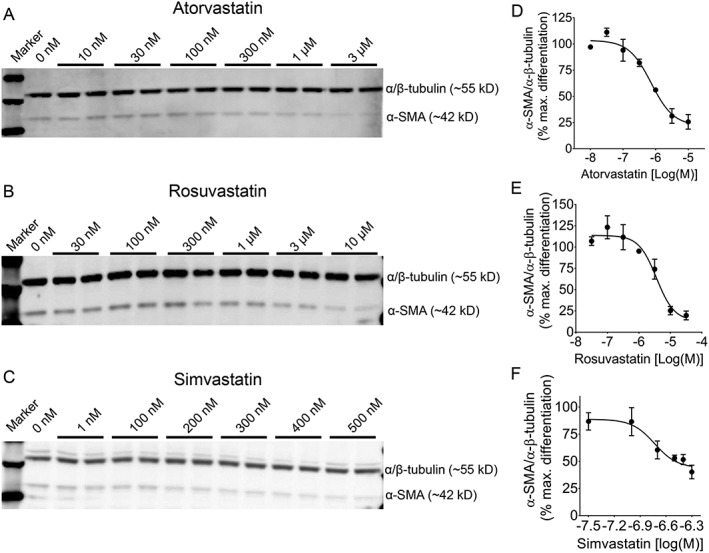Figure 1.

Concentration‐dependent de‐differentiation effect of statins in human ventricular myofibroblasts. Representative immunoblots showing the effect of in vitro treatment for 72 h with (A) atorvastatin (10 nmol/L to 3 μmol/L), (B) rosuvastatin (30 nmol/L to 10 μmol/L), or (C) simvastatin (1 to 500 nmol/L) on differentiated myofibroblasts, as determined by the expression of α‐SMA (α‐smooth muscle actin), a marker of differentiated myofibroblasts. In the right panel, respective non‐linear regression curves show the concentration‐dependent effects of corresponding statin [(D) atorvastatin, (E) rosuvastatin, and (F) simvastatin] on α‐SMA/α/β‐tubulin ratio, normalized to % maximal differentiation. For concentration for half‐maximal inhibition (IC50) analysis of atorvastatin and rosuvastatin, the highest concentration used was considered to have reached a near maximum possible effect, and any further increase in concentration was assumed to have ±5% change from the measured maximum effect (asymptote). The respective IC50 values were 729 ± 13 nmol/L (atorvastatin), 3.6 ± 1 μmol/L (rosuvastatin), and 185 ± 13 nmol/L (simvastatin); n = 3 per concentration; four‐parameter logistic fit. Data are mean ± SEM.
